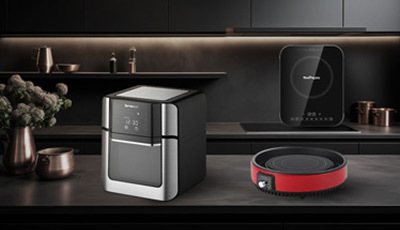The Pros and Cons of Using Induction Cookplates
Release time:
2024-04-30
Discover the benefits and drawbacks of utilizing induction cookplates in your kitchen. We delve into the advantages of this innovative cooking technology, as well as the potential downsides you should

Table of Contents:
1. Introduction: The Rise of Induction Cookplates
2. How Do Induction Cookplates Work?
3. Pros of Using Induction Cookplates
3.1 Energy Efficiency and Fast Heating
3.2 Precise Temperature Control
3.3 Safety Features
3.4 Easy to Clean
3.5 Sleek and Modern Design
4. Cons of Using Induction Cookplates
4.1 Limited Cookware Compatibility
4.2 Initial High Cost
4.3 Noise and Vibration
4.4 Learning Curve
4.5 Electromagnetic Interference
5. Frequently Asked Questions (FAQs)
5.1 Can I use any type of cookware with induction cookplates?
5.2 Are induction cookplates safe for children and pets?
5.3 Will induction cookplates increase my electricity bill?
5.4 How do induction cookplates compare to gas or electric stovetops?
5.5 Can I use an induction cookplate during a power outage?
6. Conclusion
1. Introduction: The Rise of Induction Cookplates
In recent years, induction cookplates have gained popularity among home cooks and professional chefs alike. This innovative cooking technology offers numerous benefits, from energy efficiency to precise temperature control. However, like any other kitchen appliance, there are both pros and cons to consider when deciding whether to invest in induction cookplates.
2. How Do Induction Cookplates Work?
Induction cookplates use magnetic fields to generate heat directly in the cookware. Unlike traditional gas or electric stovetops that heat the cooking surface, induction cookplates transfer heat directly to the pot or pan. This unique process allows for faster and more efficient cooking.
3. Pros of Using Induction Cookplates
3.1 Energy Efficiency and Fast Heating
One of the key advantages of induction cookplates is their energy efficiency. They heat up quickly and transfer heat directly to the cookware, resulting in faster cooking times and reduced energy consumption. With induction cookplates, you can save both time and money on your energy bills.
3.2 Precise Temperature Control
Induction cookplates offer precise temperature control, allowing you to adjust the heat with great accuracy. This level of control is especially beneficial for delicate cooking tasks that require specific temperatures. Whether you're simmering a delicate sauce or searing a perfectly cooked steak, induction cookplates provide the precision you need.
3.3 Safety Features
Induction cookplates come with built-in safety features that make them a reliable choice for any kitchen. One notable safety feature is the automatic shut-off function, which turns off the heat when no cookware is detected. This feature eliminates the risk of accidental burns or fires, offering peace of mind while cooking.
3.4 Easy to Clean
Cleaning induction cookplates is a breeze due to their smooth, flat surface. Since the heat is generated directly in the cookware, spills and splatters are less likely to burn onto the cooktop. With a simple wipe, you can easily maintain the cleanliness and appearance of your induction cookplates.
3.5 Sleek and Modern Design
Induction cookplates often feature a sleek and modern design, adding a touch of sophistication to your kitchen. Their smooth, glass-ceramic surface and minimalist controls contribute to a contemporary aesthetic that complements various kitchen styles.
4. Cons of Using Induction Cookplates
4.1 Limited Cookware Compatibility
One drawback of induction cookplates is their limited compatibility with certain types of cookware. Induction cooktops require cookware made of magnetic materials, such as cast iron or stainless steel. Cookware made of aluminum, copper, or glass won't work effectively on induction cookplates unless they have a magnetic base.
4.2 Initial High Cost
Compared to traditional stovetops, induction cookplates tend to have a higher upfront cost. The technology involved in induction cooking can make these appliances more expensive than their gas or electric counterparts. However, it's important to consider the long-term energy savings and durability that induction cookplates offer.
4.3 Noise and Vibration
While induction cookplates are generally quiet during operation, some users may notice a slight humming sound or vibration. This noise is caused by the electromagnetic fields generated during cooking. Although it may not be bothersome to most users, it's worth considering if you prefer a completely silent cooking experience.
4.4 Learning Curve
Using induction cookplates can require a slight learning curve, especially if you're accustomed to cooking on traditional stovetops. The precise temperature control and rapid heating may take some getting used to. However, with a bit of practice, you'll quickly adapt to the unique cooking experience that induction cookplates provide.
4.5 Electromagnetic Interference
Induction cookplates generate electromagnetic fields, which may interfere with certain electronic devices. It's recommended to keep a safe distance between induction cookplates and sensitive electronics to avoid any potential disruptions. However, for most households, this is not a significant concern.
5. Frequently Asked Questions (FAQs)
5.1 Can I use any type of cookware with induction cookplates?
No, induction cookplates require cookware made of magnetic materials like cast iron or stainless steel. Cookware made of aluminum, copper, or glass won't work unless they have a magnetic base.
5.2 Are induction cookplates safe for children and pets?
Yes, induction cookplates are generally safe for children and pets. Their built-in safety features, such as automatic shut-off when no cookware is detected, minimize the risk of accidents.
5.3 Will induction cookplates increase my electricity bill?
No, induction cookplates are highly energy efficient, which can actually help reduce your electricity bill compared to gas or electric stovetops.
5.4 How do induction cookplates compare to gas or electric stovetops?
Induction cookplates offer faster heating, precise temperature control, and energy efficiency compared to gas or electric stovetops. However, they have a limited cookware compatibility and may have a higher upfront cost.
5.5 Can I use an induction cookplate during a power outage?
No, induction cookplates require electricity to function. During a power outage, they won't be operational. It's advisable to have an alternative cooking method available.
6. Conclusion
Induction cookplates offer numerous benefits, including energy efficiency, precise temperature control, and built-in safety features. While they may have drawbacks such as limited cookware compatibility and a higher initial cost, the advantages outweigh the disadvantages for many cooking enthusiasts. Consider your specific needs and preferences when deciding whether induction cookplates are the right choice for your kitchen.
RELATED NEWS
Share to




